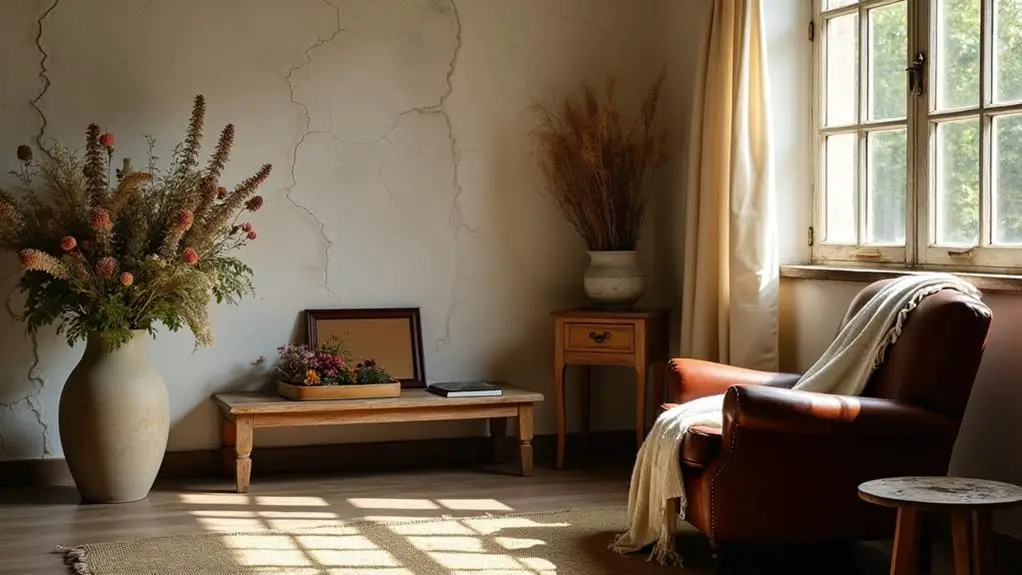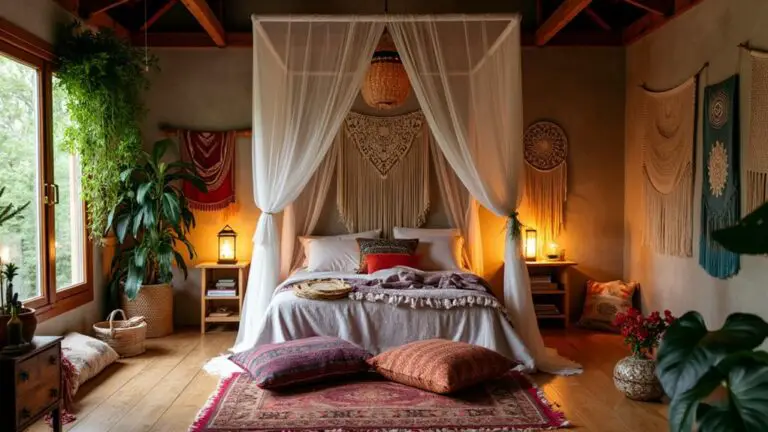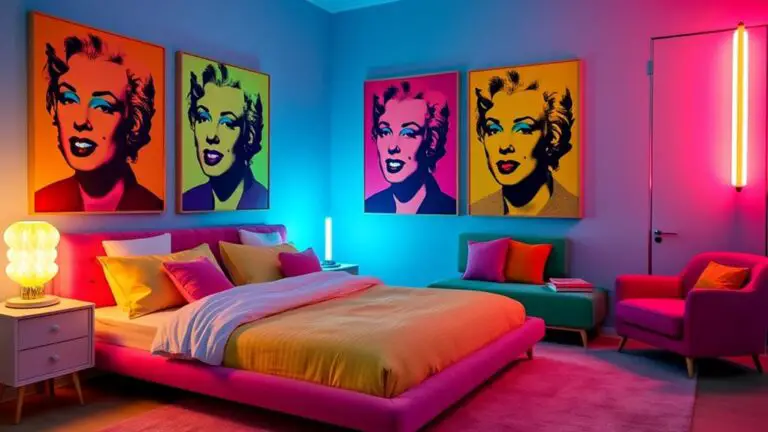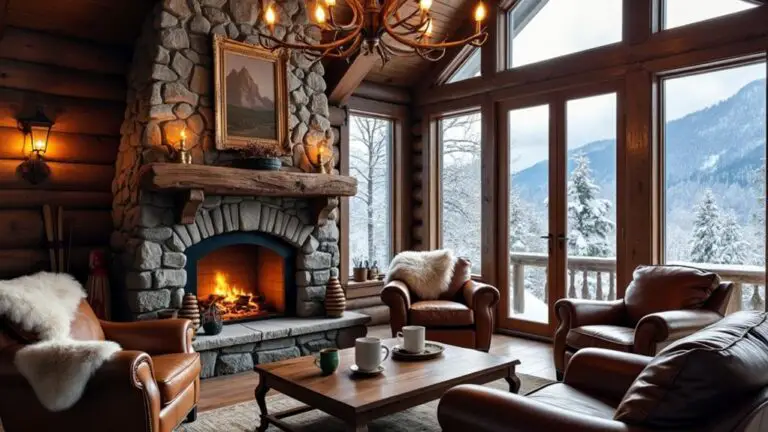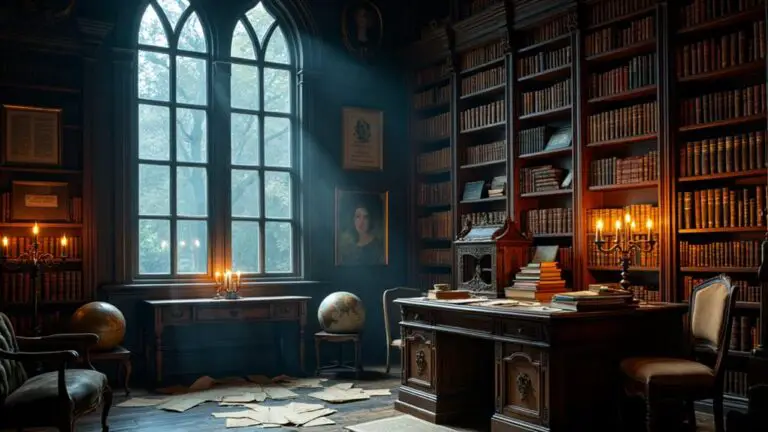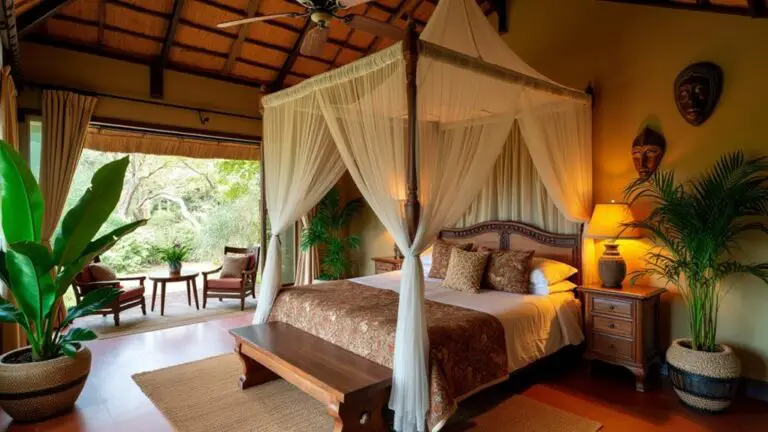Wabi-Sabi Wonders: Embracing Imperfection in Room Decor
I've discovered that embracing wabi-sabi in room decor can transform any space into a serene sanctuary. This Japanese philosophy celebrates imperfection and transience, using natural materials, muted earth tones, and handmade items to create a calming atmosphere. I love incorporating raw wood, stone, and ceramics with visible flaws, which add character and warmth. By choosing simple, functional furniture and artisanal pieces, I've created a clutter-free environment that promotes mindfulness and relaxation. Wabi-sabi has taught me to appreciate the beauty in imperfection, making my home feel more authentic and connected to nature. There's so much more to explore in this mindful approach to design.
What To Know
- Incorporate natural, imperfect materials like raw wood, stone, and handmade ceramics to add authentic character to your space.
- Embrace asymmetry and irregularity in furniture and decor choices to create a relaxed, organic atmosphere.
- Use a neutral, earthy color palette to promote tranquility and connection with nature in your room design.
- Display aged or weathered items to celebrate the beauty of imperfection and the passage of time.
- Mix handcrafted and vintage pieces with modern elements to create a unique, personalized space that tells a story.
Understanding Wabi-Sabi Philosophy
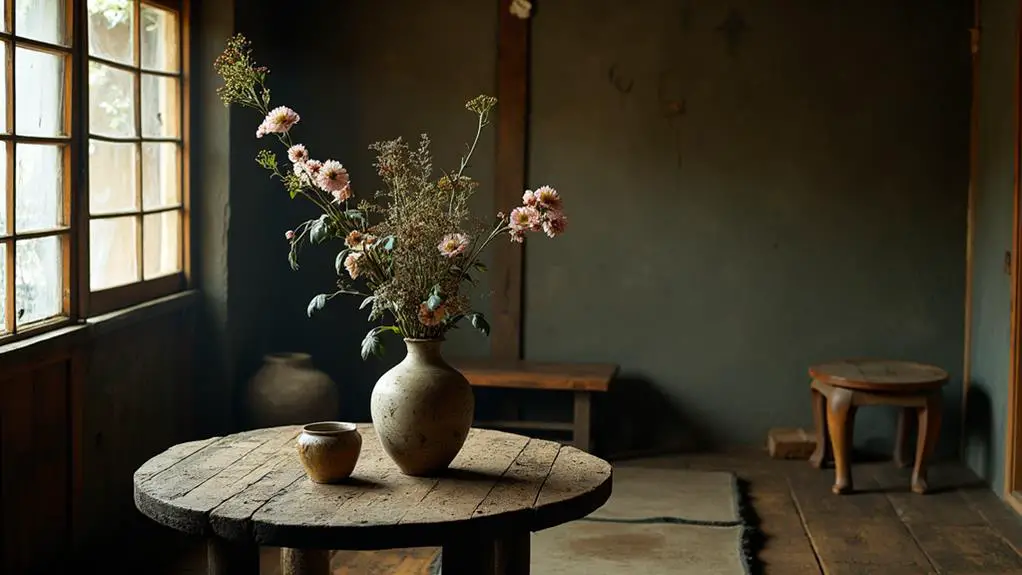
Rooted in Japanese culture, Wabi-Sabi is a profound philosophy that's reshaping how we perceive beauty and design. As I've explored deeper into this concept, I've come to appreciate its emphasis on the beauty of imperfection and transience.
Wabi Sabi encourages us to embrace the natural cycle of growth, decay, and change in our surroundings. This design philosophy combines simplicity with the allure of age and wear, valuing authenticity over perfection.
It's about accepting imperfections and seeing them as enhancements to an object's character and story. By incorporating natural materials and celebrating the passage of time, Wabi-Sabi invites us to practice mindfulness and find contentment in life's fleeting moments.
This approach has gained global recognition, inspiring sustainable design movements and a more relaxed aesthetic that prioritizes genuine experiences over flawless appearances.
Elements of Wabi-Sabi Design
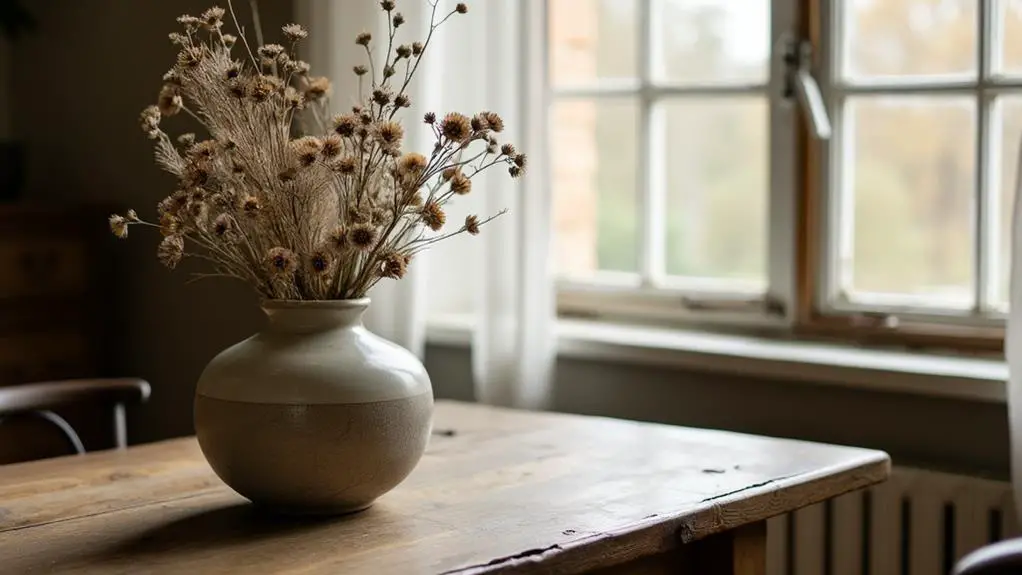
The essence of Wabi-Sabi design lies in its embrace of natural elements and imperfection.
I've found that incorporating natural materials like wood, stone, and ceramics creates an authentic, warm atmosphere that celebrates the beauty of nature.
The wabi-sabi design philosophy encourages us to appreciate the imperfections that come with age and use.
To achieve this aesthetic, I focus on:
- A neutral color palette of subdued earth tones
- Simple, functional furniture with clean lines
- Handcrafted or vintage accessories that tell a story
- A clutter-free, minimalist environment
Creating a Wabi-Sabi Bedroom
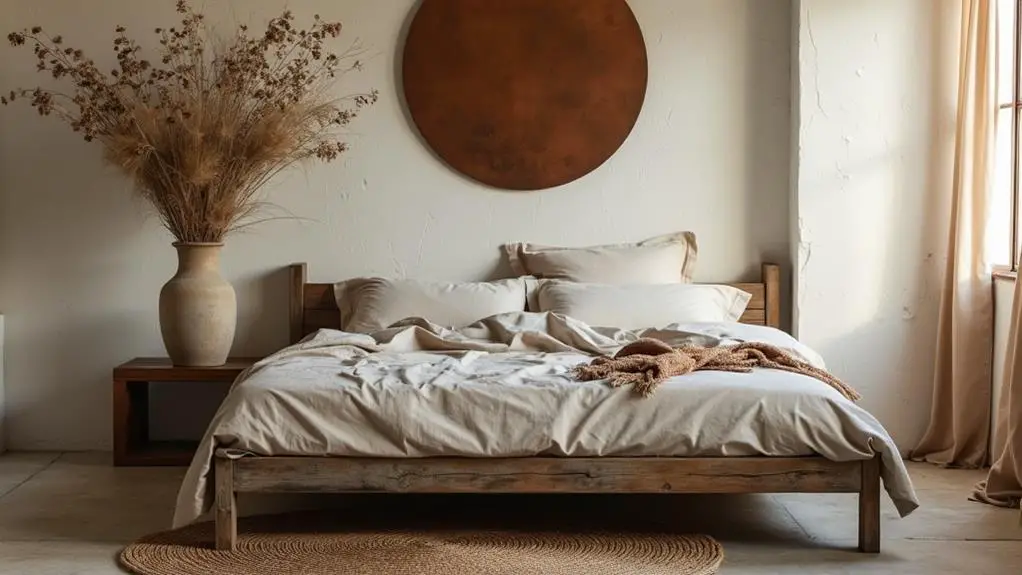
Serenity forms the foundation of a Wabi-Sabi bedroom, where comfort and authenticity intertwine. I've found that natural materials like wood and linen create a cozy and inviting atmosphere. Imperfections are celebrated, with vintage finds and handmade pieces adding character to the space.
Here's a quick guide to creating a Wabi-Sabi bedroom:
| Element | Wabi-Sabi Approach |
|---|---|
| Bed frame | Natural wood, simple design |
| Bedding | Soft, breathable fabrics |
| Walls | Neutral tones |
| Decor | Artisanal, nature-inspired |
| Furniture | Rustic, organic textures |
I've learned that beauty found in simplicity is key. By incorporating plants and woven baskets, I create a sense of connection with nature. Decluttering and keeping only cherished items aligns with the Wabi-Sabi philosophy, promoting a serene environment that embraces imperfection and authenticity.
Wabi-Sabi Kitchen and Bathroom Ideas
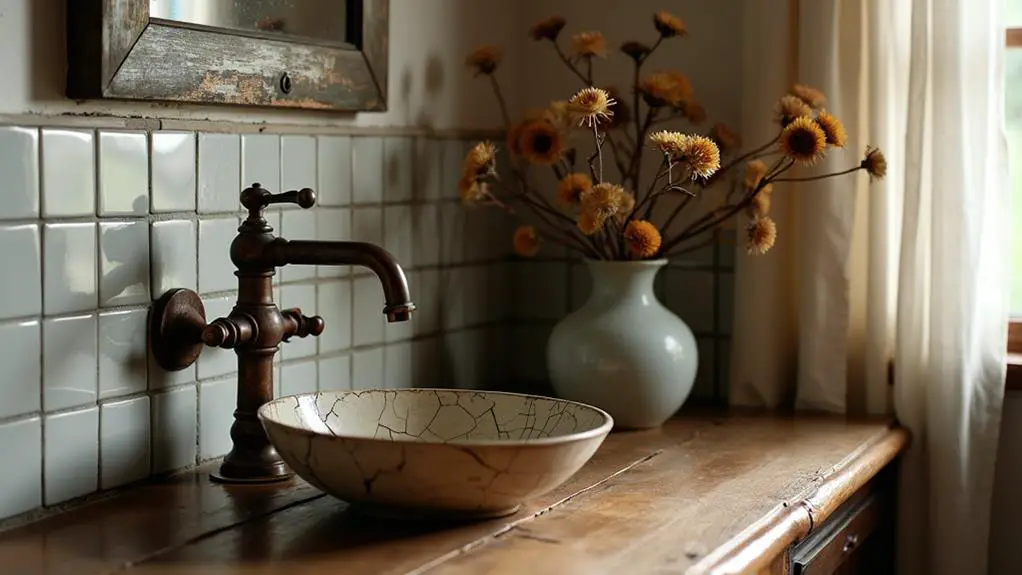
I've found that embracing imperfect kitchen surfaces is key to achieving a Wabi-Sabi aesthetic.
In my experience, raw wood countertops and oxidized metal fixtures create a warm, lived-in atmosphere that celebrates the beauty of wear and tear.
For the bathroom, I focus on designing a serene sanctuary by incorporating soft, neutral colors and artisanal elements like handmade tiles, which foster a tranquil environment connected to nature.
Embracing Imperfect Kitchen Surfaces
Perfection in imperfection defines the essence of Wabi-Sabi kitchen surfaces. I've found that embracing natural materials like raw wood and stone creates a connection with nature and adds warmth to my cooking space.
By finding beauty in unique textures and flaws, I've transformed my kitchen into a cozy Wabi-Sabi interior that feels lived-in and inviting.
To achieve this aesthetic, I've incorporated:
- Open shelving to display handmade ceramic dishes
- A muted color palette with earthy tones and soft neutrals
- Artisanal elements like handmade tiles and organic fixtures
- Plants and natural light to enhance the organic atmosphere
These choices not only celebrate the beauty of age and wear but also promote a sense of tranquility.
Serene Bathroom Sanctuary Design
Moving from the kitchen to the bathroom, we can extend the Wabi-Sabi aesthetic to create a serene sanctuary.
I've found that using natural materials like stone, wood, and bamboo instantly transforms the space into a tranquil oasis. Soft, neutral colors complement these elements perfectly, enhancing the room's calming atmosphere.
I love incorporating artisanal pieces, such as handmade ceramic tiles or fixtures, which add character and embrace imperfections.
To maximize the connection with nature, I always recommend large windows or skylights that flood the space with natural light. This openness creates an airy feel that's essential to the Wabi-Sabi philosophy.
Finally, I add touches of greenery with ferns or succulents, further blending the indoors with the natural world.
These elements combine to form a bathroom that's not just functional, but a true retreat for relaxation and rejuvenation.
Incorporating Natural Materials and Textures
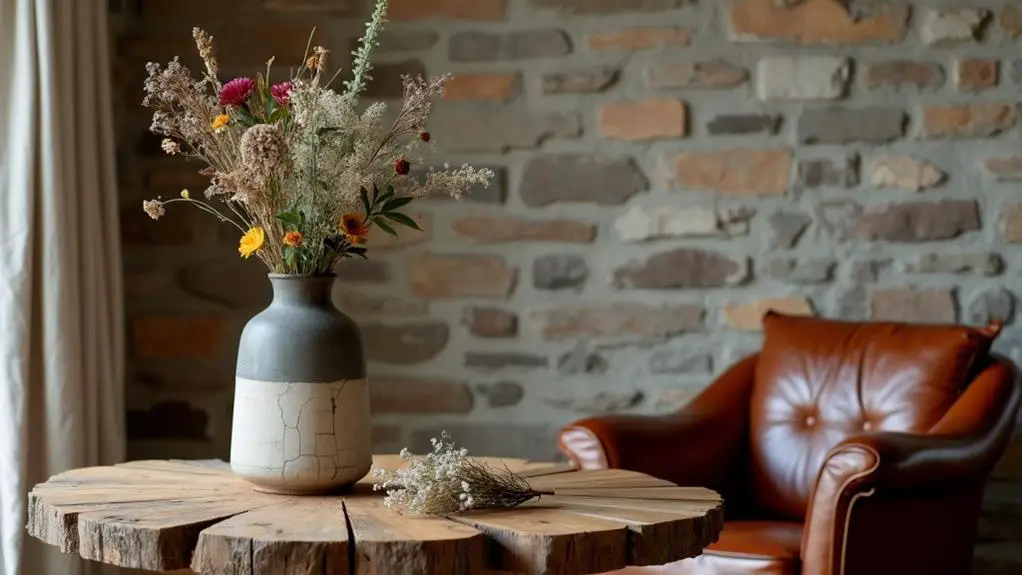
I've found that raw wood accents and textured ceramic elements are essential in bringing Wabi-Sabi to life in my home.
The natural grains and imperfections of untreated wood surfaces add warmth and character to my space, while handcrafted ceramics introduce tactile interest and a connection to the earth.
Raw Wood Accents
Raw wood accents serve as a cornerstone in Wabi-Sabi inspired room decor, bringing a touch of nature's imperfect beauty indoors.
I've found that incorporating these elements not only adds warmth and authenticity but also aligns with the Wabi-Sabi philosophy of embracing imperfections.
When I use raw wood in my home decor, I'm celebrating the unique character of each piece, especially when it's reclaimed or salvaged.
The tactile experience of raw wood enhances the overall atmosphere, creating a comforting space that encourages relaxation.
I love combining it with other natural materials for a harmonious environment.
Here's how I incorporate raw wood accents:
- Exposed beam ceilings
- Floating shelves with live edges
- Unfinished wooden side tables
- Driftwood wall art
Textured Ceramic Elements
Textured ceramic elements beautifully complement raw wood accents in Wabi-Sabi inspired decor. I've found that incorporating handmade ceramic pieces adds character to my space, with each item telling a unique story through its texture and design. The irregular shapes and finishes celebrate natural imperfections, aligning perfectly with Wabi-Sabi principles.
| Element | Characteristics | Benefits |
|---|---|---|
| Shape | Irregular | Unique |
| Finish | Imperfect | Character |
| Color | Earthy tones | Calming |
| Texture | Varied | Tactile |
| Origin | Handmade | Authentic |
I love how textured ceramics create visual interest and depth in my room, encouraging a tactile experience that connects me to the materials' origins. By pairing these elements with organic fabrics and natural wood furniture, I've created a harmonious environment that embodies the essence of Wabi-Sabi design.
Embracing Imperfection in Decor Choices
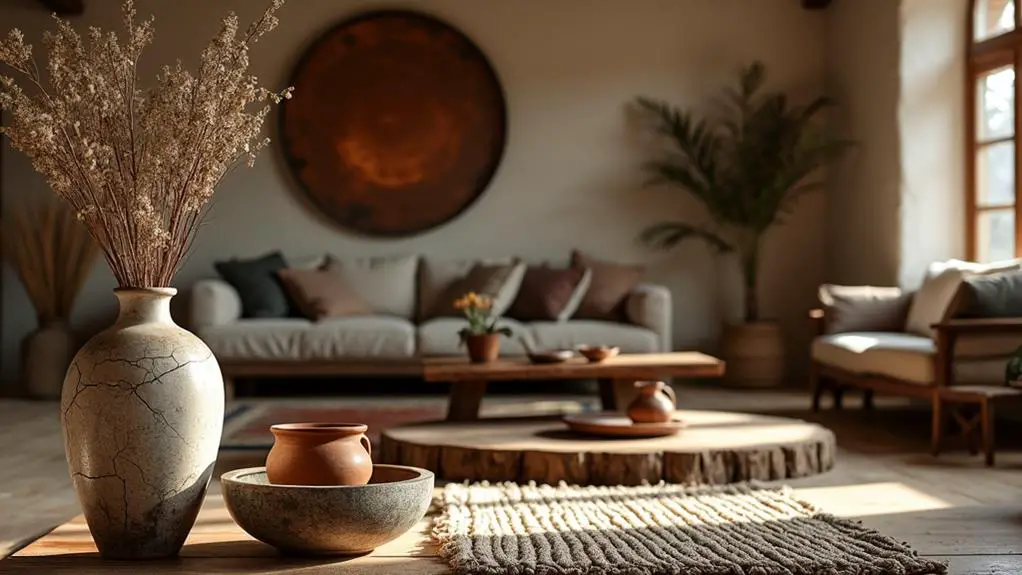
Embracing imperfection in decor choices is a cornerstone of the Wabi-Sabi aesthetic. I've found that incorporating natural materials with visible flaws, like rough wood and uneven ceramics, enhances the aesthetic appeal of my living spaces.
By celebrating these imperfections, I'm not only adhering to the Wabi-Sabi philosophy but also creating a more authentic and character-rich environment.
I've discovered that embracing imperfection offers several benefits:
- Encourages the use of handmade, unique items
- Allows for personal expression through mix-and-match approaches
- Creates a warm, comforting atmosphere with asymmetrical elements
- Reduces environmental impact by incorporating upcycled materials
Cultivating Mindfulness Through Wabi-Sabi Spaces
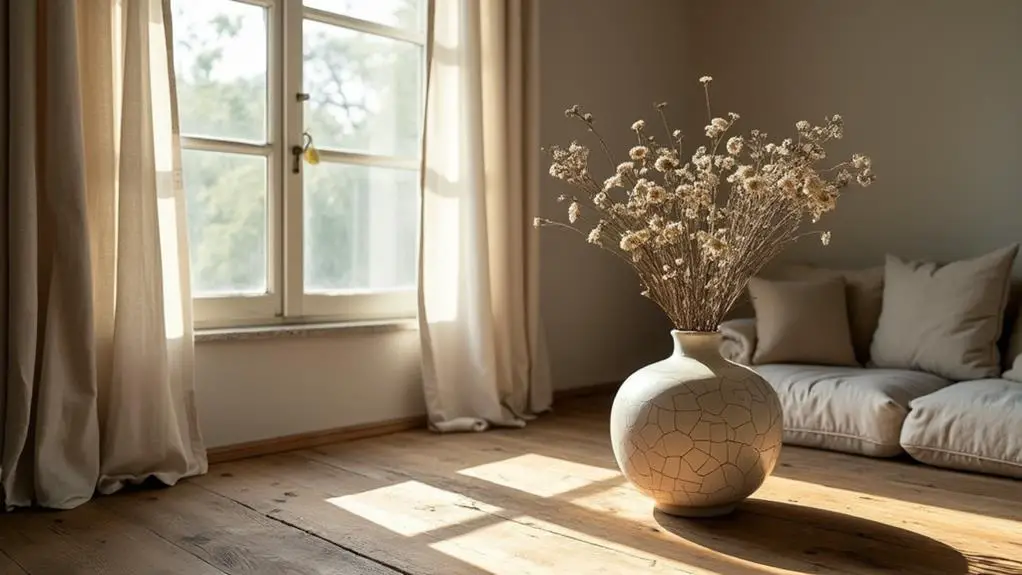
The art of cultivating mindfulness through Wabi-Sabi spaces goes beyond mere aesthetics. I've found that embracing imperfections in my living space has deepened my connection to my environment and experiences. By incorporating natural materials and earth tones, I've created a serene atmosphere that promotes relaxation and presence in my daily life.
| Wabi-Sabi Element | Mindfulness Benefit |
|---|---|
| Handmade items | Appreciation of stories |
| Imperfect objects | Self-acceptance |
| Natural textures | Sensory awareness |
| Earthy colors | Grounding presence |
| Minimalist design | Focus on essentials |
Surrounding myself with artisanal pieces reminds me of the beauty in flaws and encourages self-reflection. This approach has enhanced my mindfulness practices, leading to greater self-awareness and gratitude. By embracing the transience of life through Wabi-Sabi design, I've learned to cherish fleeting moments and find contentment in my living space.
Conclusion
As I embrace wabi-sabi in my home, I'm painting a canvas of serenity with nature's brushstrokes. Imperfect textures whisper stories, while weathered objects become poetry in wood and stone. My space breathes with the rhythm of passing seasons, a living representation of time's gentle touch. In this sanctuary of mindful imperfection, I've found a mirror to my own beautiful flaws. Wabi-sabi isn't just decor; it's a soul-soothing journey, inviting me to dance with life's exquisite impermanence.

